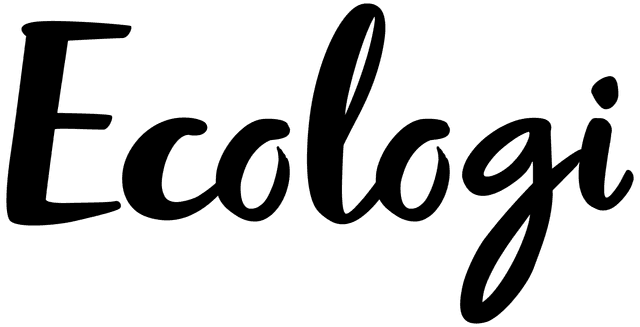)
At MAJOR, we often work with startup brands—brands with no history, no context in the minds of an audience. These embryonic brands are blank slates, and building them into something memorable demands laser-sharp clarity.
Every piece of brand collateral has to pull its weight to build momentum and recognition. There’s simply no room for ambiguity. At this stage, brand identity must be a Ronseal job: it needs to do exactly what it says on the tin.
Unlike established brands, which can afford more abstract messages, a new brand needs to be more direct. Think of McDonald’s “I’m Lovin’ It”—a phrase that resonates only because it’s bonded to decades of brand familiarity, billions in advertising, and an iconic golden arches logo. To an alien landing on Earth tomorrow, that phrase would mean little without the history behind it.
But a new brand doesn’t have that luxury. It needs to instantly convey its value. And while we’re predominantly a visually creative agency, we know that one of the most critical starting points in brand building, is a strong verbal identity.
Why Verbal Identity Comes First
The Power of Words
Before we encounter a logo, a colour palette, or a slick website design, we often 'hear' a brand name or tagline. Growth happens through virality, and words are far easier to share than visuals. A brand’s verbal identity—the words it uses to describe itself—sets the foundation for every impression that follows.
Recitability is Key to Organic Spread
Think about the brands that stick in your mind. Was it a logo or a phrase that caught your attention first? Chances are, it was a word-of-mouth recommendation—a short, snappy recommendation from someone you trust, that summarised the brand in a way that meant it just clicked.
For new brands, creating this “recitability” is vital. Messaging needs to be clear and catchy, practically begging to be shared in conversations or social media posts.
This clarity doesn’t limit creativity; it sharpens it. A memorable verbal identity strikes a unique balance between clarity and creativity. It makes the brand’s value obvious while sparking curiosity and recall. And most importantly, it ensures that anyone speaking about your brand, whether internally or externally, uses the same compelling narrative.
Building Blocks of a Verbal Identity
Brand Story
The narrative that captures your brand’s history, mission, and vision. It should resonate emotionally, helping your audience care about your journey and goals.Key Messages
These are the succinct statements that define your brand’s value and purpose. They should be memorable, easy to articulate, and consistent across all communication. The pinnacle of which is your tagline—your brand promise.Tone of Voice
Your tone reflects your brand’s personality and values. Whether formal, mischievous or friendly, your tone needs to be consistent to mould trust and recognition.
Creating a Verbal Brand Strategy
Understand Your Audience
Know who you’re speaking to. What are their needs, desires, and pain points? Tailor your story and key messages to resonate with them.Articulate Your Unique Value
Clearly define what makes your brand different and why it matters. TThis should form the core of your messaging.Ensure Consistency
Maintain consistency across all touchpoints—messaging, tone, and overall experience. A unified approach reinforces your brand identity, fosters recognition, and builds trust over time.
Crafting the Killer Tagline
Create a phrase that not only informs but sticks. It should be something people can—and will—repeat, enabling that first spark of brand meaning.
Get to the Core Message
trip everything back to the essentials. What’s the one thing your brand must communicate to leave an impression? Boil it down to a simple, unmissable message.Aim for Clarity with Character
While clarity is key, avoid bland wording. Add a hint of personality—wit, cleverness, or a unique tone can make a tagline distinctive.Test for Stickiness
Test your tagline with real people. Can they recall it easily? Could they explain it to someone else? A great tagline is simple, memorable, and shareable.Think Beyond the Tagline
Your verbal identity isn’t just a tagline. It’s a narrative that extends to how you describe your services, communicate on social media, or interact with customers. Consistency across all these elements builds trust and solidifies your brand in people’s minds. So be absolutely sure that your tagline emboldens your messaging and doesn't introduce any confusion.
Implementing Your Verbal Identity
Internal Training
Ensure everyone in your organisation understands the brand story, key messages, and tone of voice. This creates a unified brand presence.Content Creation
Apply your verbal identity consistently across all content—from social posts to internal comms. Consistency is what makes your brand recognisable.Customer Interaction
Train teams to use your brand’s verbal identity in every customer interaction, ensuring a seamless brand experience.
The Words That Spark Meaning
Clear, unambiguous messaging sets new brands up for long-term success. Words—simple, unmistakable descriptions—are often the first spark of brand meaning in the audience’s mind.
So, while logos and visuals are crucial, never underestimate the power of a strong verbal identity. It’s the words that people remember, repeat, and share—the words that make your brand unforgettable and build that all important brand meaning in an audience's mind.
&w=64&q=10)
)
&w=64&q=10)



